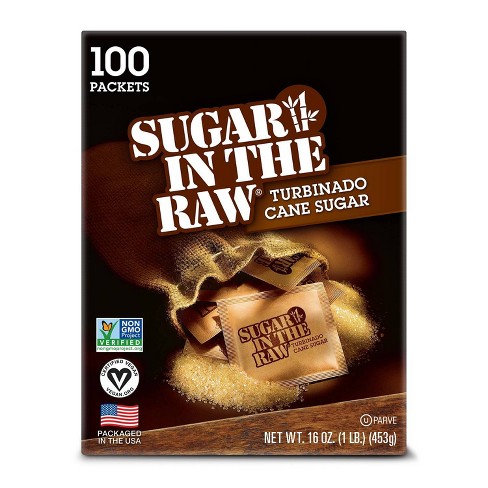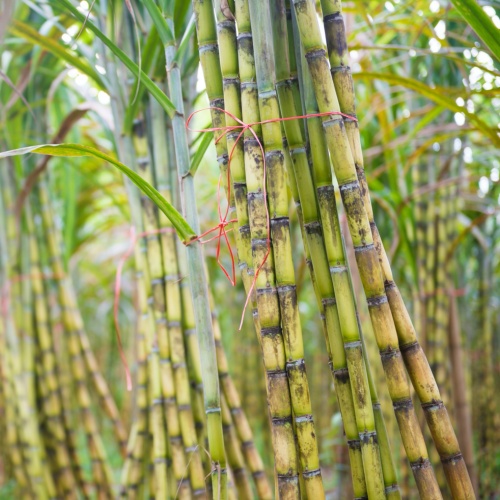Discovering the Comprehensive Tips Associated With Cane Sugar Processing From Collecting to Improvement
The procedure of walking cane sugar production encompasses a series of detailed steps, beginning with the cautious harvesting of sugarcane and culminating in the improvement stages that make certain the final product satisfies industry requirements. Each phase, from the extraction of juice to the filtration and condensation procedures, plays an essential function in figuring out the high quality and character of the sugar. Understanding these phases not only highlights the complexity of sugar manufacturing yet additionally raises crucial questions about efficiency, sustainability, and technology in the market. What ramifications do these factors have for future practices?
Collecting Sugarcane
Collecting sugarcane is a crucial action in the walking stick sugar processing chain, as it directly influences the quality and yield of the final product. Appropriate timing and methods are necessary throughout this stage to make sure optimum sugar content and decrease losses. Usually, sugarcane is gathered when it gets to maturity, typically 12 to 18 months after planting, characterized by a high sucrose concentration.

Post-harvest, the sugarcane has to be processed promptly to stop sucrose degradation. Ideally, harvested cane needs to be moved to refining centers within 24-hour to preserve sugar quality. As a result, reliable logistical preparation is vital to maintain the stability of the collected crop throughout the supply chain.
Extraction Refine

The smashed walking stick undergoes a collection of pressing operations to maximize juice recovery. Normally, warm water is splashed onto the smashed walking cane, producing a countercurrent flow that helps liquify the sugar while additionally helping in the removal procedure. The juice gathered from this operation consists of not only sugar yet likewise various organic compounds and pollutants.

To improve extraction performance, some centers might utilize diffusion techniques, where the sugarcane is soaked in warm water, allowing the soluble sugars to diffuse into the liquid. The resulting juice, rich in sucrose, is then routed to subsequent processing stages, laying the structure for purification and improvement. The extraction process is hence essential in determining the quality and yield of the final sugar item.
Purification Strategies
The purification strategies utilized in walking stick sugar handling are essential for transforming the raw juice into a top quality sugar product. These techniques primarily intend to eliminate pollutants, such as dirt, plant products, and not natural materials, which can adversely impact the end product's flavor and color.
One of one of the most typical filtration methods is explanation. This process entails including lime and warmth to the raw juice, which assists in the coagulation of pollutants. The resulting precipitate is then eliminated via sedimentation or filtration, generating a more clear juice. Additionally, using phosphoric acid can enhance the explanation procedure by additional binding impurities.
One more considerable technique is carbonatation, where carbon dioxide is presented to the cleared up juice. This response creates calcium carbonate, which catches continuing to be impurities and promotes their removal.
In addition, activated carbon therapy may be put on adsorb any kind of staying colorants and organic impurities, ensuring a much more refined product. The combination of these techniques efficiently prepares the sugar juice for subsequent Our site action in the refining procedure, setting the stage for the manufacturing of top quality walking stick sugar.
Crystallization Approaches
After the filtration phase, the following essential step in walking cane sugar handling involves formation techniques, which play a pivotal role in changing the cleared up juice into strong sugar. This procedure typically employs 2 key approaches: spontaneous condensation and controlled crystallization.
In spontaneous crystallization, supersaturated sugar options are allowed to cool down normally, bring about the formation of sugar crystals in time. This approach is simpler but might lead to irregular crystal sizes and lower pureness levels. On the other hand, managed condensation is a more accurate method where seeding, temperature level, and focus agents are carefully handled. This approach enables the consistent growth of sugar crystals and higher pureness.
Throughout crystallization, the made clear juice the original source is concentrated via evaporation, enhancing its sugar web content until it gets to supersaturation. As soon as this point is attained, either approach can help with the crystallization procedure. Cane Sugar Processing. The resultant sugar crystals are after that divided from the continuing to be syrup via centrifugation
Eventually, the choice of crystallization technique affects the top quality, dimension, and purity of the final sugar product, making this step vital in the overall cane sugar handling treatment.
Refinement and Packaging
Exactly how can the pureness and quality of walking cane sugar be even more boosted after formation? The improvement process plays a crucial role in achieving high-grade walking cane sugar.
Following, the sugar is subjected to a procedure called centrifugation, where it is rotated at high rates to separate the purified sugar crystals from the continuing to be fluid. After centrifugation, the sugar is usually more improved via a method called carbonization or phosphatation, which uses turned on carbon or phosphoric acid to remove color and off-flavors.
When improved, the sugar is dried out to accomplish the preferred dampness web content, ensuring that it stays steady during storage space and transportation. The last step entails product packaging the polished sugar in moisture-proof and airtight containers to maintain its top quality and avoid contamination. Cane Sugar Processing. Appropriate product packaging not only extends service life however additionally helps with very easy handling and distribution, guaranteeing that consumers obtain sugar that fulfills the over here highest possible requirements of pureness and top quality
Verdict
The extensive actions entailed in walking stick sugar processing, from the meticulous harvesting of sugarcane to the elaborate improvement and product packaging stages, emphasize the relevance of each phase in guaranteeing premium sugar manufacturing. Ideal harvesting strategies, efficient removal approaches, and rigorous purification processes collectively add to the end product's pureness and stability. The crystallization and succeeding packaging methods additionally boost the honesty and rack life of the sugar, highlighting the complexity and precision intrinsic in this essential agricultural sector.
The process of walking cane sugar manufacturing encompasses a collection of elaborate steps, beginning with the careful harvesting of sugarcane and finishing in the refinement stages that ensure the final product meets sector standards. Ideally, harvested walking stick must be carried to processing facilities within 24 hours to maintain sugar quality.In spontaneous crystallization, supersaturated sugar services are allowed to cool naturally, leading to the development of sugar crystals over time - Cane Sugar Processing. The refinement procedure plays a crucial role in achieving top notch cane sugar.The thorough steps entailed in cane sugar processing, from the precise harvesting of sugarcane to the complex improvement and product packaging phases, highlight the relevance of each stage in making sure high-quality sugar production
Comments on “The Science Behind Cane Sugar Processing: How Sweet Taste is Refined”